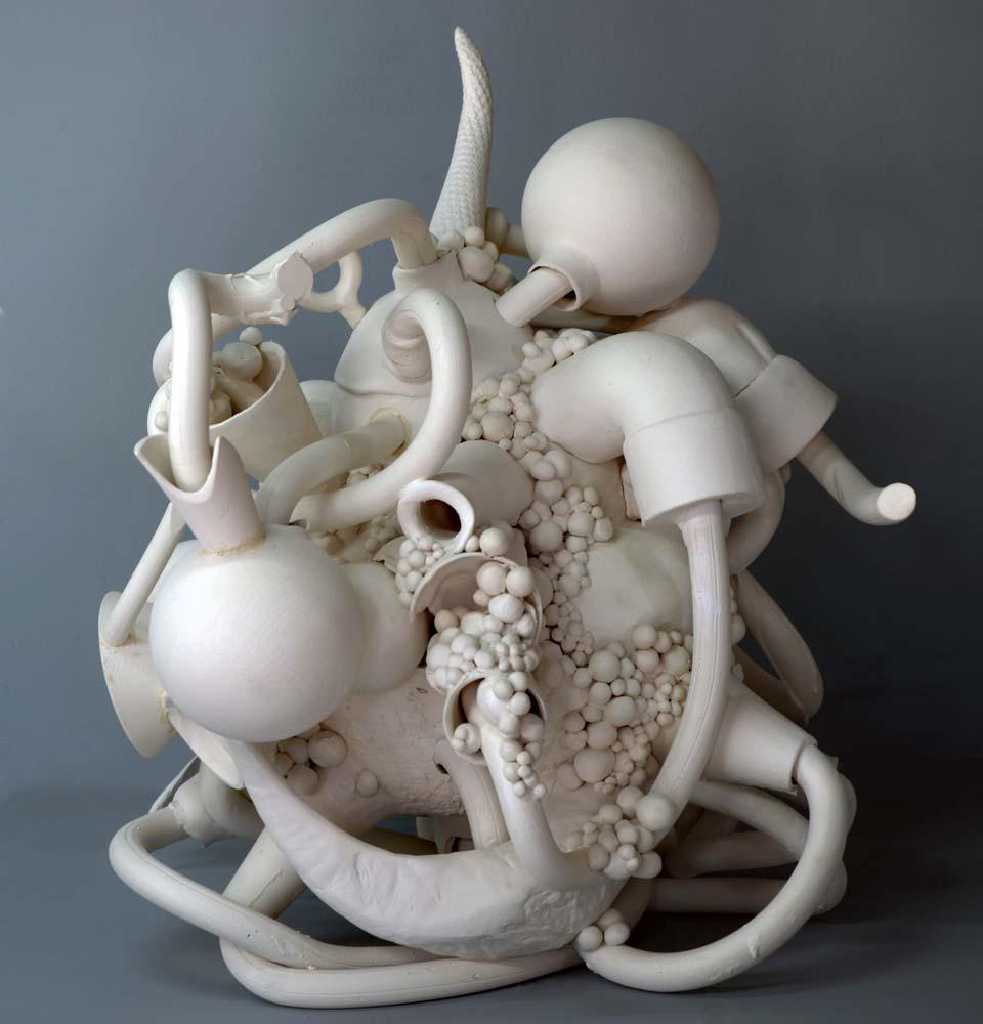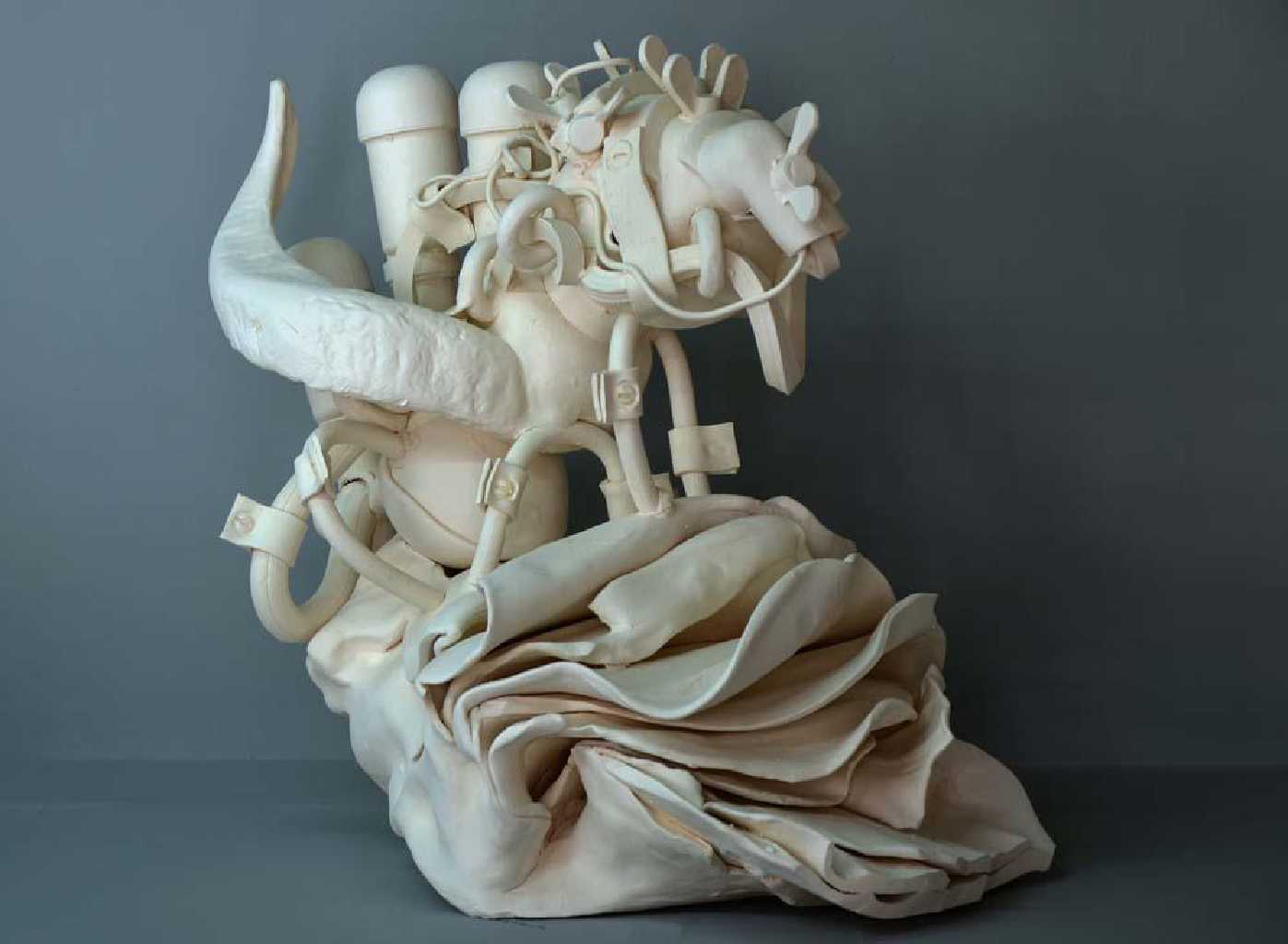Aris Katsilakis
Findings
23 Mar – 29 Apr 2017 Athens TEXT BY BY Yiannis Bolis
“The germ of the observation of nature through a different look starts unconsciously at my childhood since my father too, an artist too, used to resort to the study of nature to find solutions for the completion of his ceramics works.
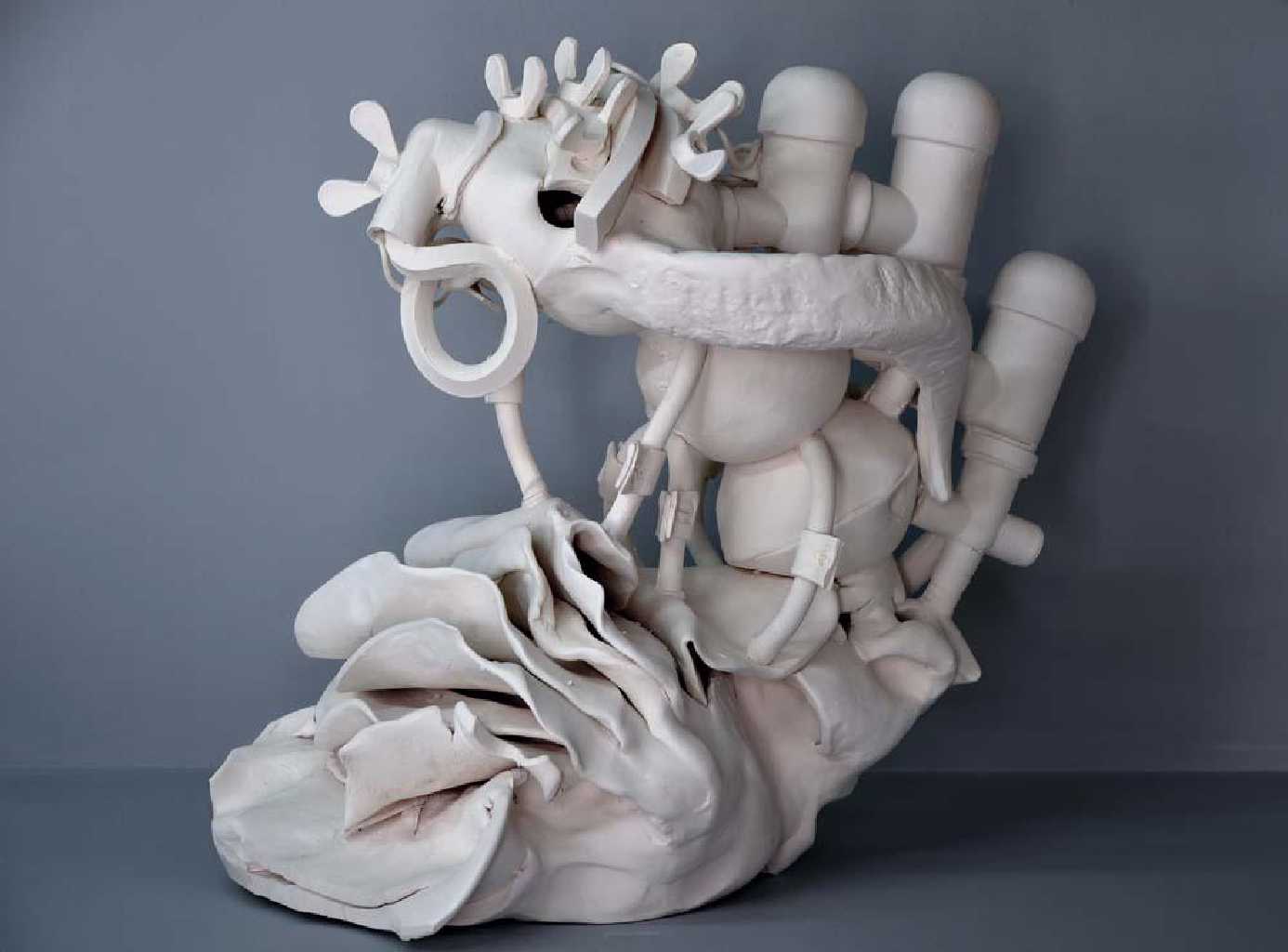
Having started his studies at Marble Sculpture in the School of Fine Arts of Tinos, Aris Katsilakis continued in the Athens School of Fine Arts with Theodoros Papagiannis being his professor and has shown a bold and persistent avocation with the attribution of the mass in space. What particularly interests him, according to him, is the onset from visual stimuli of nature and the world around him, that transform completely so that in their final imprint they do not look like at all the image of their initial origin. Although this complete transformation is a common procedure in Sculpture, especially since imitation and the naturalist approach have given it their place, Katsilakis’ dedication to embody it through so many different materials is really outstanding: from the initial material, the marble, he went on easily to other used materials such as cardboards, newspapers, twine, unprocessed wool and other worthless materials until he finally ended up with white clay.
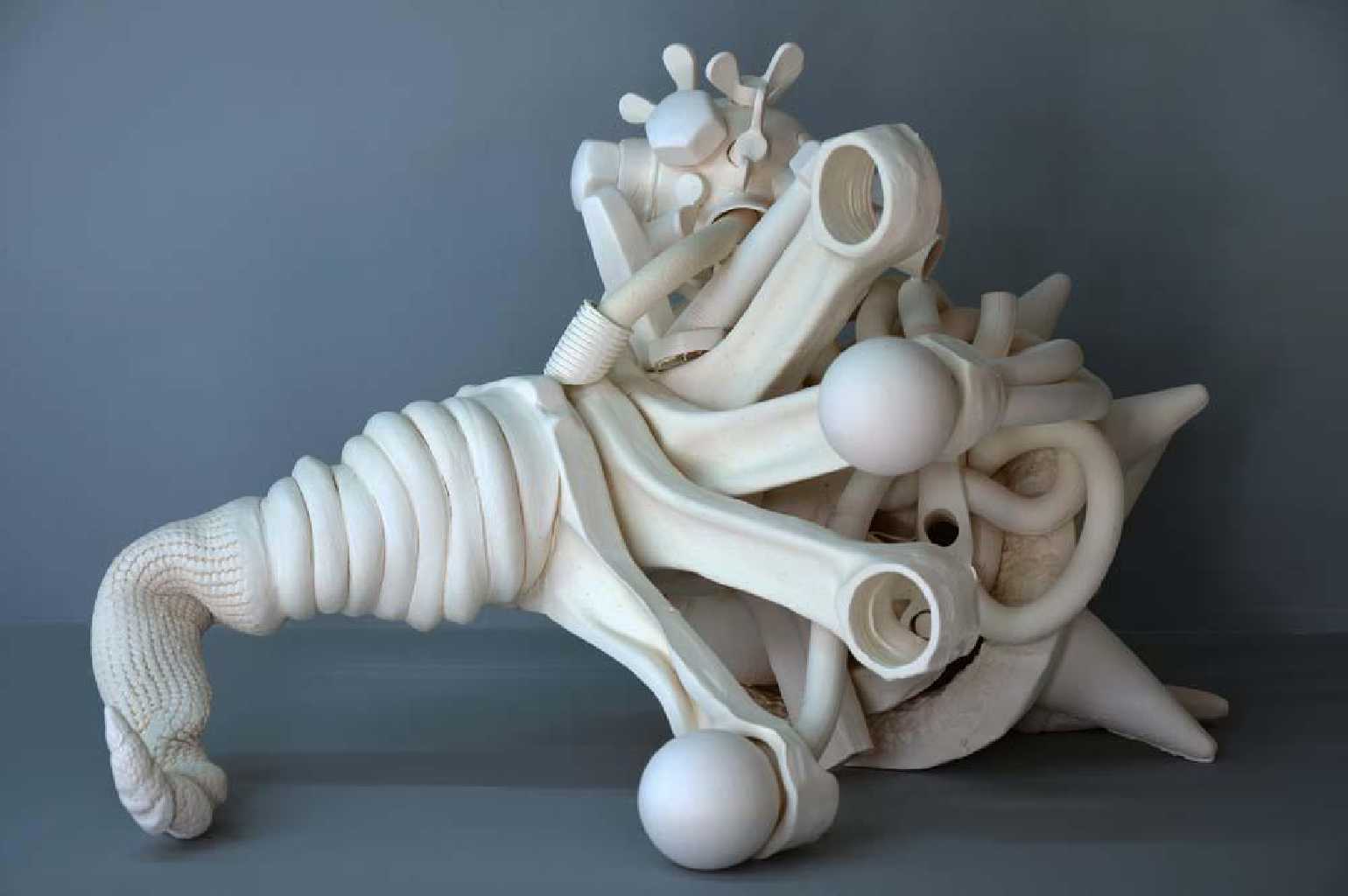
With references to Arte Povera initially and to a marginal neo baroque amagalm and minimalism later, Katsilakis’ sculptural forms can easily be characterised as “findings from the future”. A paradox characterizes them from the beginning: undoubtedly they come from nature and the living creatures around us but they cannot identify with any of them in particular; they usually look like fossils of organisms that are discovered by archaeologists and scientists and are exhibited in glass cases offering knowledge for the past, but the creatures they consist of foresee future transformations. Consequently, neither their morphoplastic references nor their time delineating can be easily determined. This unspecified mood causes the viewer who enjoys the sculptural compositions around him to experience mixed feelings that remain hanging between the aesthetic enjoyment and the fear of the unfamiliar.

Complexes of organs and industrial parts that identified with the rubbish of a consumer society during the previous period of evolution of the artist, now with the investiture of the white clay, as clear forms without uncomfortable corners can stand with a lot of courage in places of high artistic quality or museums. Not like holes or dark reflections from recycled materials in the surroundings but as well preserved fossils of a fictional archaeology of the future. Fossils that intensify their unworldly character flirting with an annoyingly tasteful ornamentation that conflicts with an inauspicious sign that never stops to escort them: genetically modified animals or humane hybrids, creatures of the bottom of the sea or flora of a distant planet system, the recent series of sculptures could be part of the many dystopian science fiction movies that overcrowd the cinema halls.
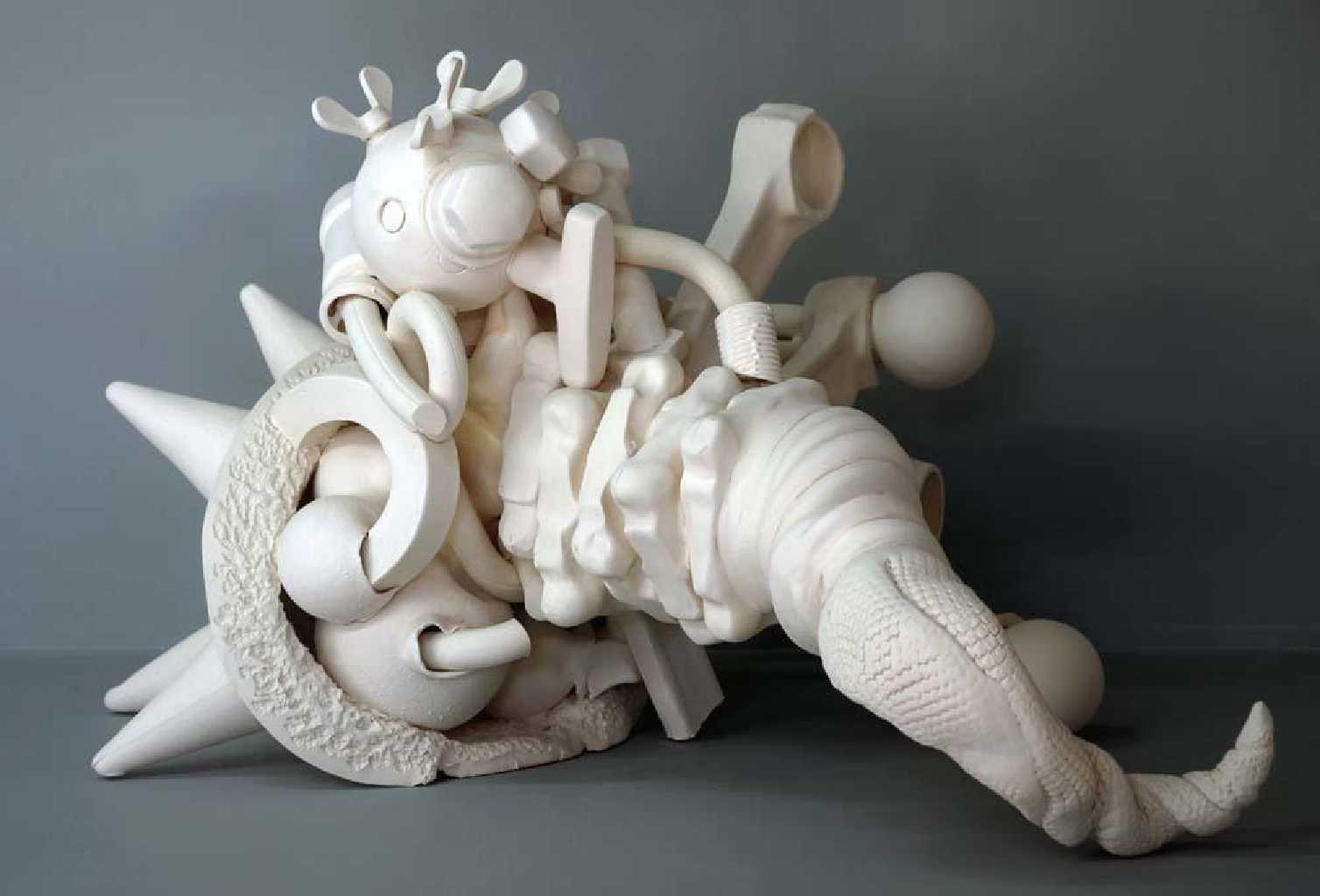
Aris Katsilakis’ more and more complex organic forms like preposterous findings of the archaeological hoe of a future researcher emerge in the space forecasting the upcoming changes of the human organisms in a nightmarish postindustrial era. The intense concern about the effect that the human intervention has both on the environment and the human kind is prevalent in his artistic expression without transforming into a denunciatory or educative visual vocabulary. Biomorphically and at the same time extraocularly artificial, organically and industrially, ‘softly’ and fragile, the sculptures of the ‘Mutation’ series dislike the investiture of skin and deny the cohesion of a complete body. Katsilakis firstly composes perfectly the clay bringing the faintest detail in harmony with the total and then fritters the futuristic hybrids to reveal the awful inner part, the parts they consist of, the labyrinthine arteries and their functional mechanisms. Cut off the ensemble, they exhibit their almost self complacently complex, curved masses and their shiny surface, which pushes almost voyeuristically the vision to its protrusions and cavities inviting-challenging even the sense of touch.
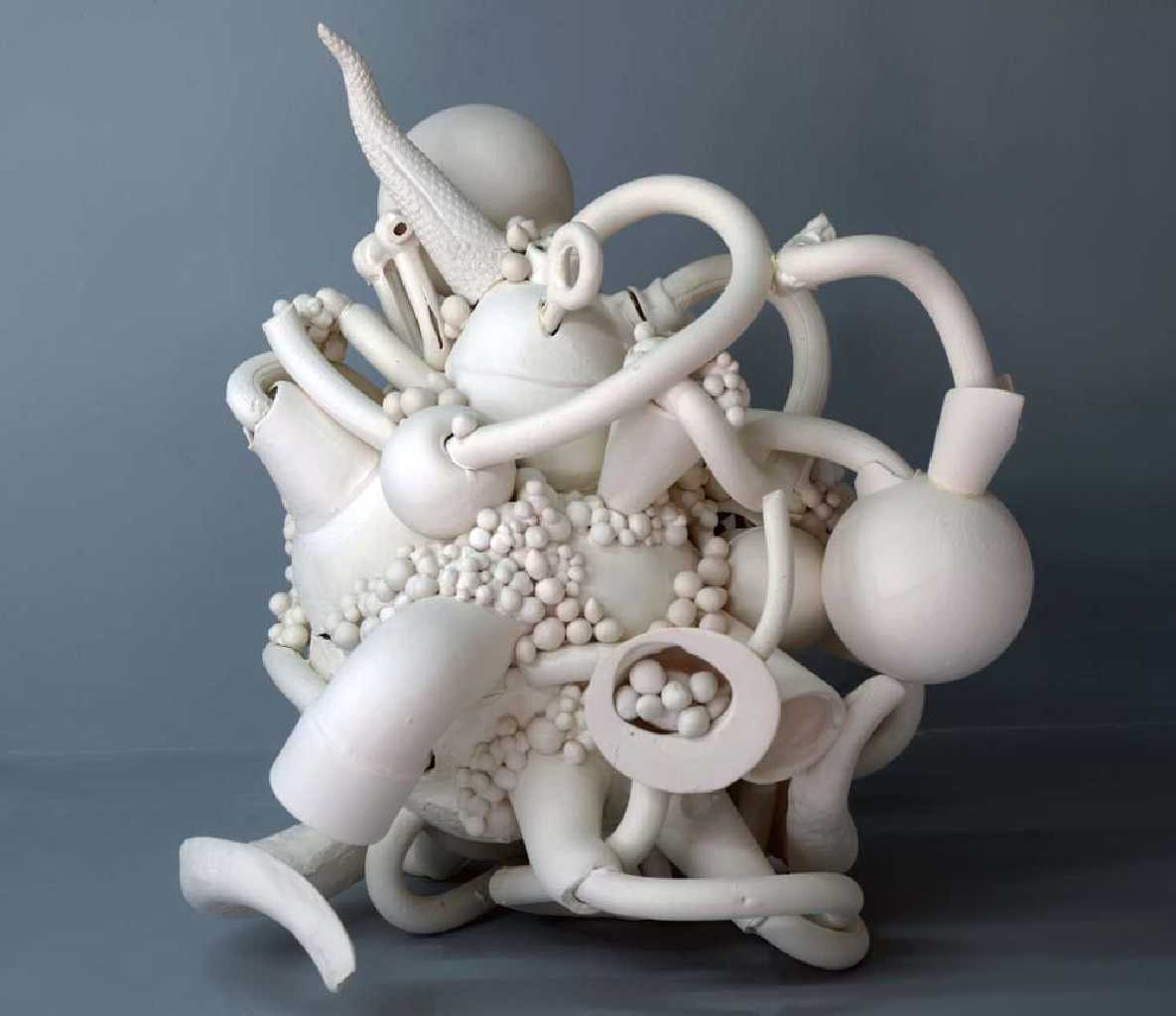
This is the spot of the new sensuality as it consists of the delight of the look and the disgust of the thought in front of the nightmarish scenario of the human evolution; one thing is for sure, that the evolution of the research and the practice of Katsilakis is exceptionally interesting in the field of Sculpture in Greece and forecasts even more daring ‘transformations’ in the future.
